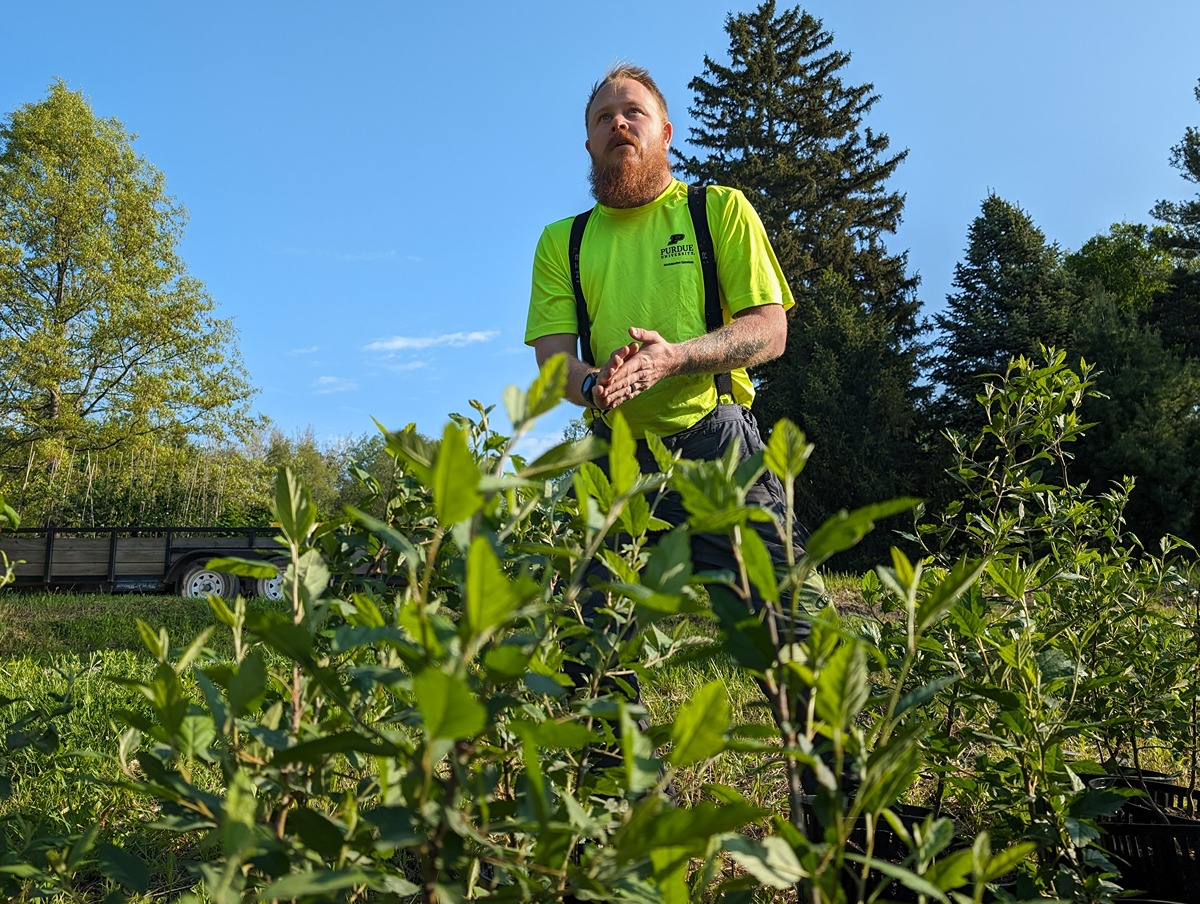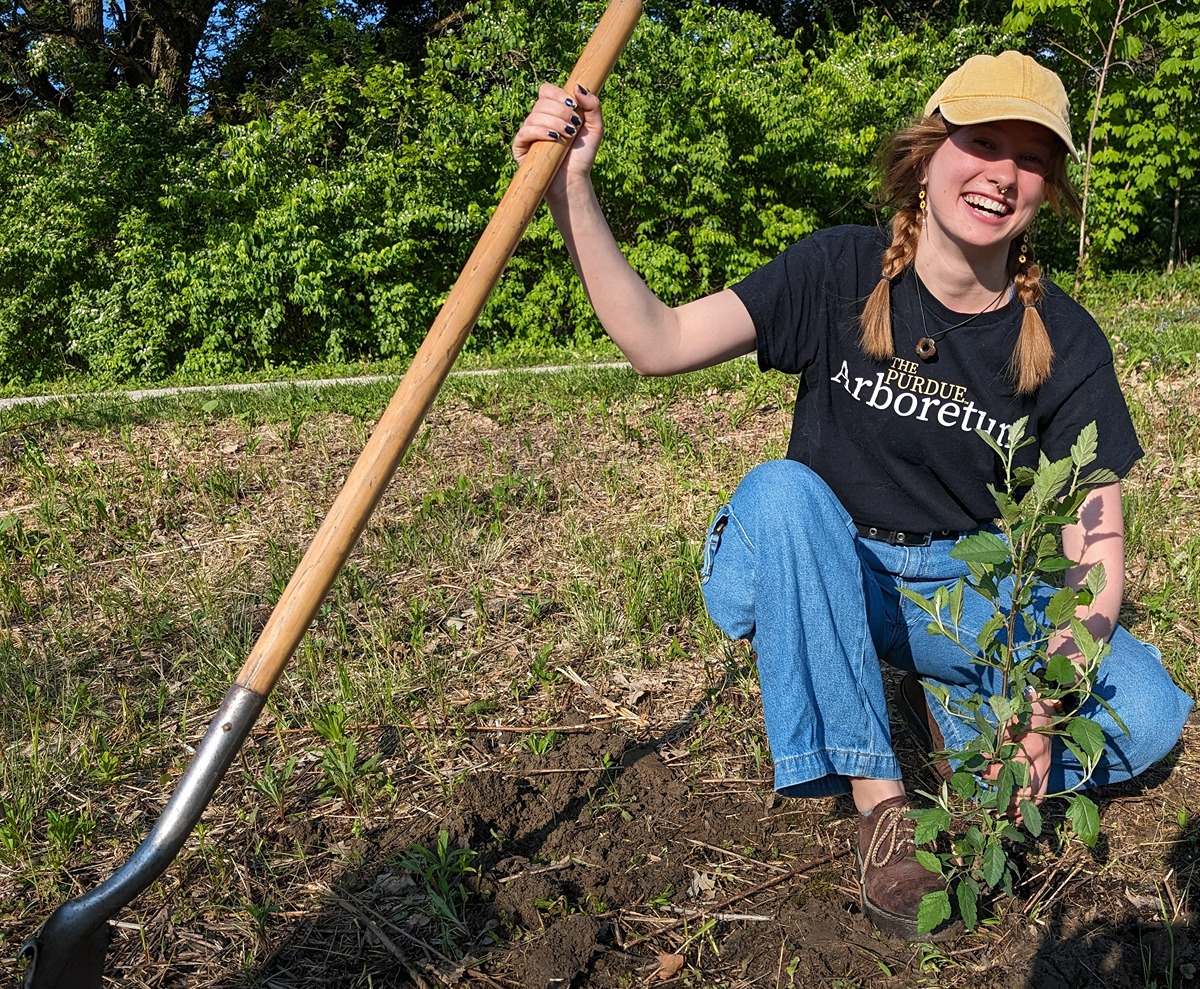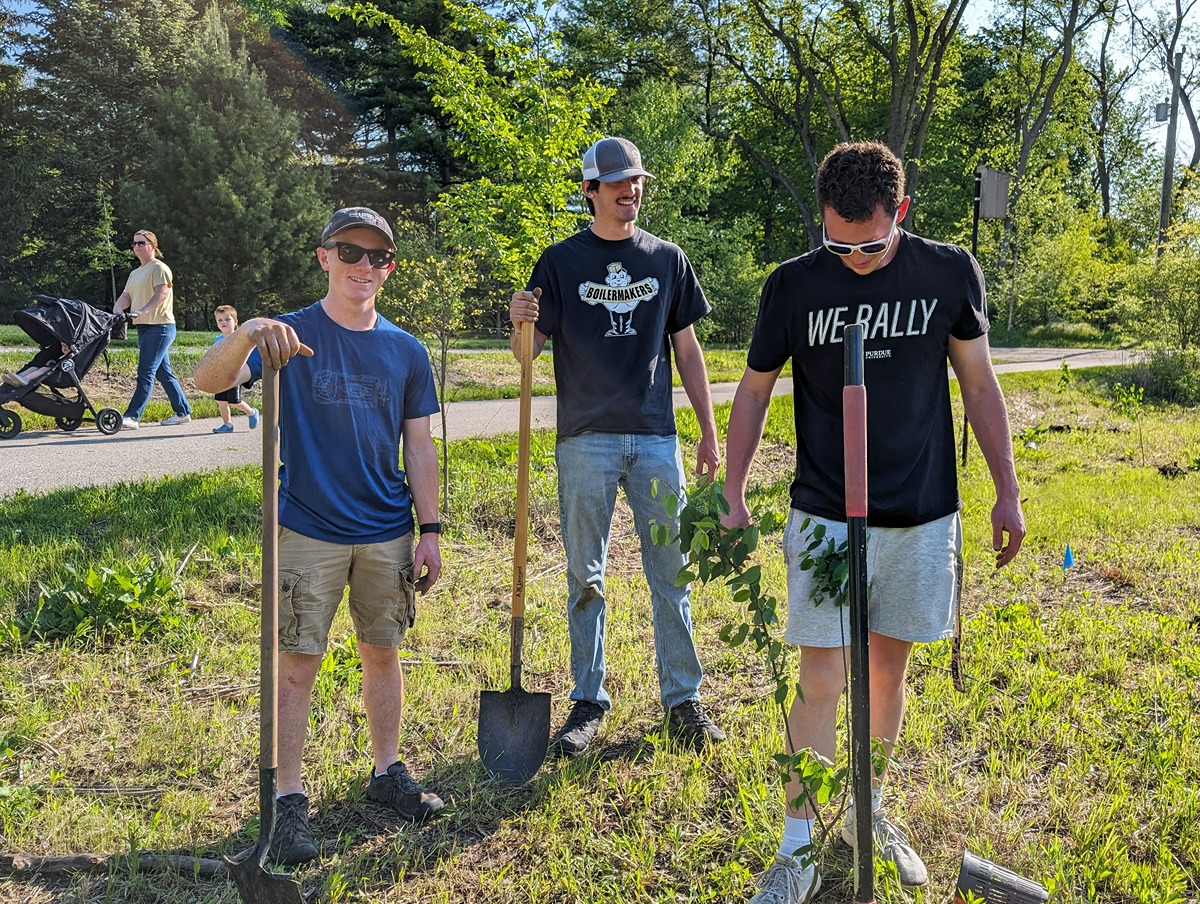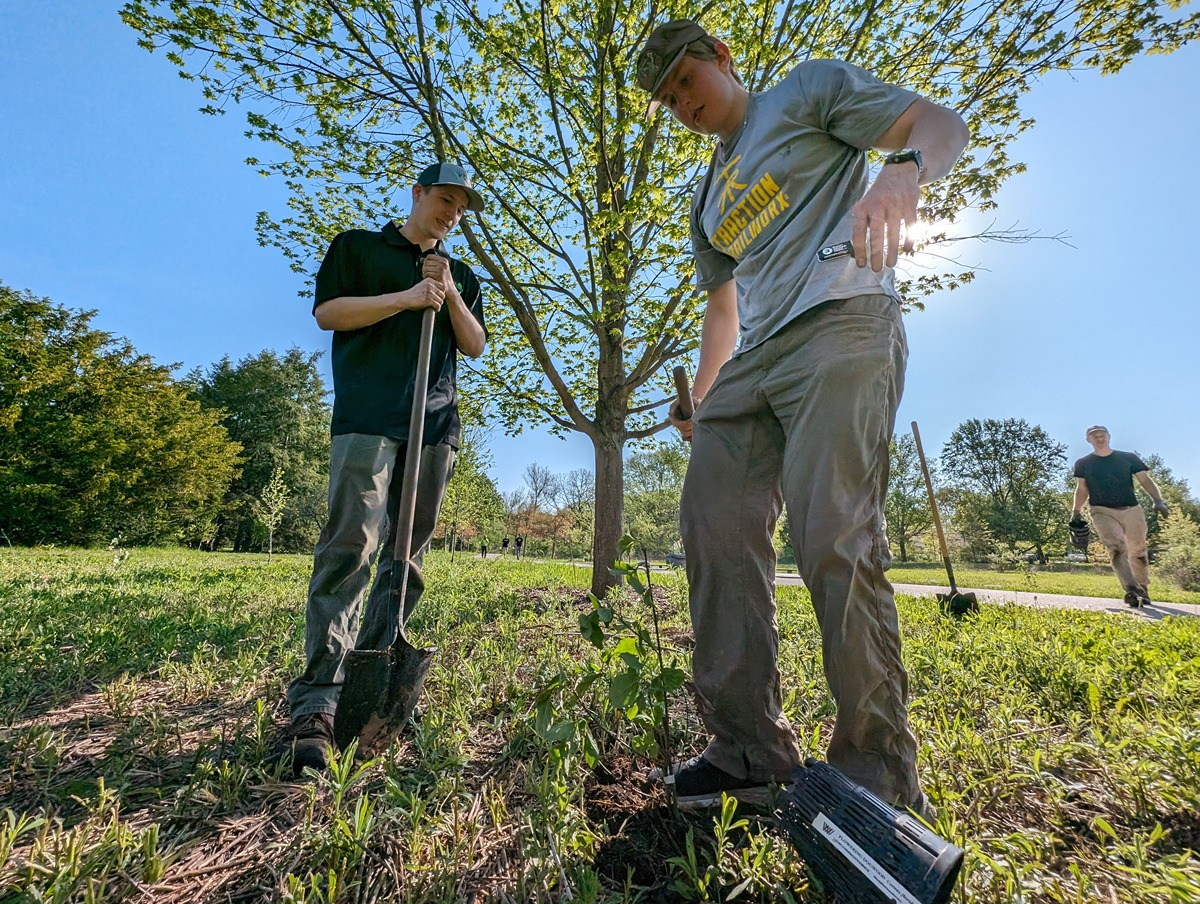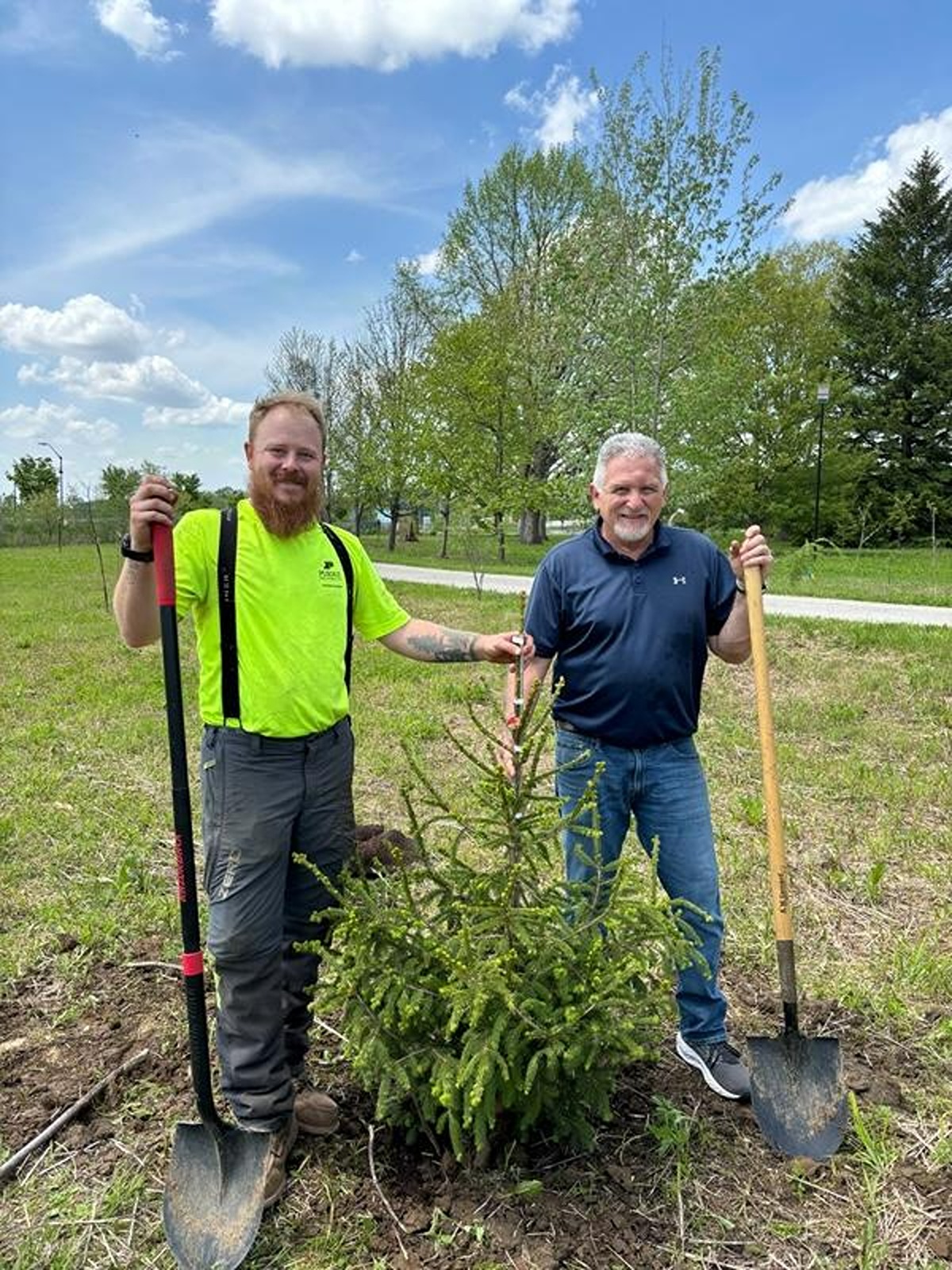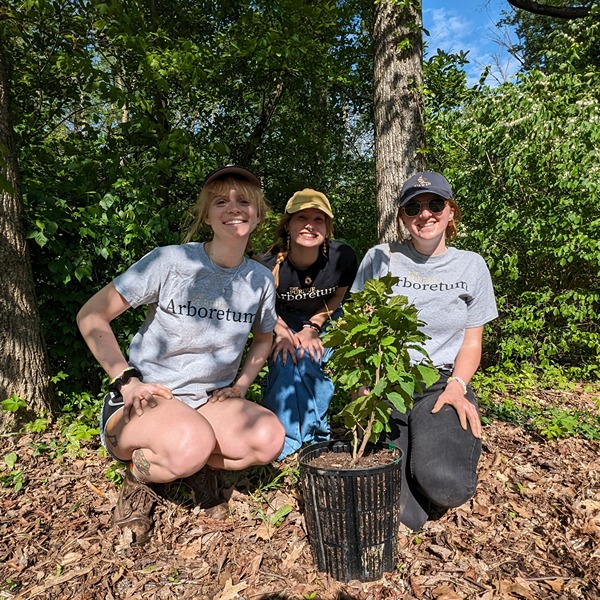Thousands of trees, hundreds of volunteers, five years and one giant leap for the Purdue Arboretum
The clayey Indiana soil, still saturated from the last spring shower, squishes under shovels. The sun beats down on the hottest day of the year thus far as knees dig into mud. Hands knead through clumps of dirt and earthworms to soften it for the foundation of newly-planted native trees.
This year, the Purdue Arboretum made groundbreaking history. In the fall of 2019, together with Purdue for Life Foundation, Purdue Grounds Department and the Campus Planning, Architecture and Sustainability Facilities, they made their own mission plan in the spirit of Purdue’s 150 years of giant leaps. The 1869 Tree Planting Master Plan called for 1,869 trees to be planted on campus and Purdue-owned lands, a number inspired by Purdue’s founding year. Former Purdue President Mitch Daniels told the group to double the number.
To celebrate Arbor Day in late April, 150 volunteers joined in planting 260 trees, pushing the plan’s total to 3,416 trees and leaving over 300 left to plant before the 2024 deadline.
Another round of volunteers, this time horticulture and landscape architecture majors, planted trees on May 2 in Horticulture Park. Arboretum director Paul Siciliano and the Grounds Department delivered trees and were excited to put the tools and decision-making power in students’ hands.
“We’re landscape architects. Typical architects work with building materials like bricks and mortar, but plants are our materials,” Siciliano said. “Experiences like this and working with the arboretum gives horticulture and landscape architecture students a chance to learn more about trees and apply their knowledge from class.”
Student workers for the Purdue Arboretum have actually been picking out what trees to plant and where to place them. Their focus has been on native plant species.
“Working for the arboretum provides good experience for industry, and it’s nice to get outside and be paid for it,” horticulture student and arboretum supervisor Kayla Edgerly said.
Other students with little to no experience planting trees came because of their environmental activism, to do something fun after finals and just to hang out with friends. Horticulture student Isaac Damer brought his pals Patrick Shea from computer science and Jack Barden from political science and “dragged them along for the ride.”
Since landscape architecture majors travel to complete a year-long cooperative experience after their junior year, tree-planting during finals week also served as a last hurrah for some. Roommates Josh Bailey and Odin Johnson swapped hypotheses about who would have a hotter summer in their co-op: Bailey in Orlando or Johnson in Dallas.
As the day came to a close, friends and peers wiped mud away from their hands and tossed their shovels back in the trailer behind the Grounds Department’s truck. Arboretum director Siciliano thanked the group for their hard work. From witch hazels to crabapples to service berries and more, the groves they planted across Purdue would positively impact the environment, wildlife and the community for generations to come.
The contribution of our students is a major factor in the success of the arboretum. This student-led planting of the 1869 Tree Plan at Horticulture Park is an example of their hard work and passion for creating a beautiful and sustainable landscape on campus. They’ve left a living mark on Purdue.”
- Paul Siciliano, Purdue Arboretum Director
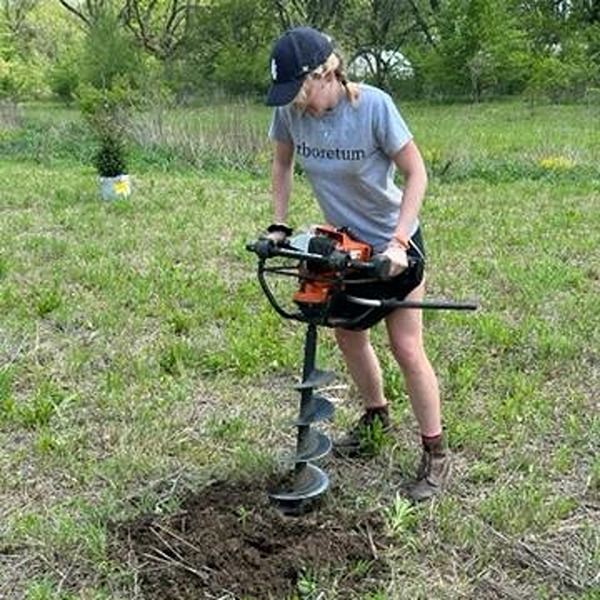 Madeline Budan uses an auger to drill a hole in the soil for the larger spruce trees, which required a deeper planting hole than most of the others.
Madeline Budan uses an auger to drill a hole in the soil for the larger spruce trees, which required a deeper planting hole than most of the others. 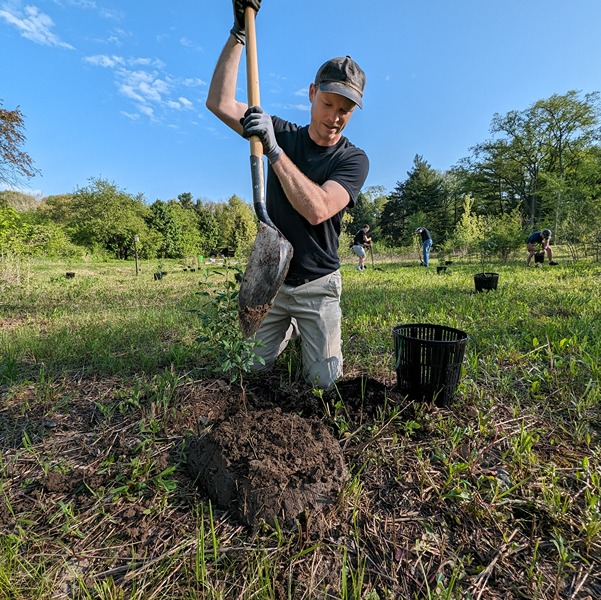 Stephen Mills, who worked in landscaping before coming to Purdue, knew to bring gloves to the event and how to use his shovel to break up the soil.
Stephen Mills, who worked in landscaping before coming to Purdue, knew to bring gloves to the event and how to use his shovel to break up the soil. 
